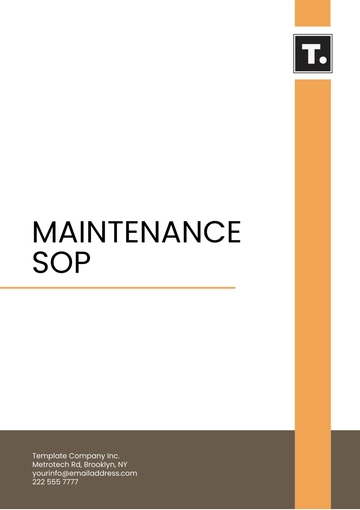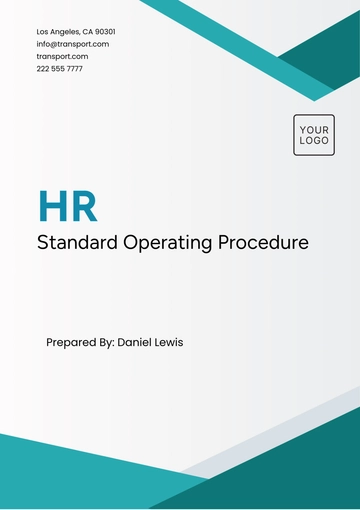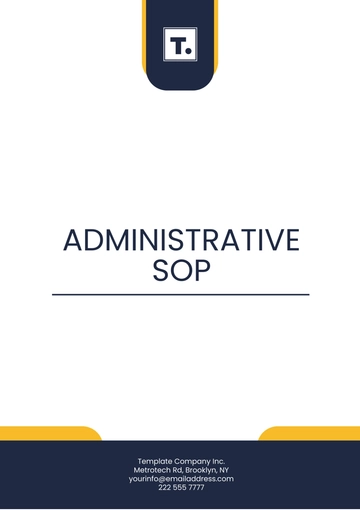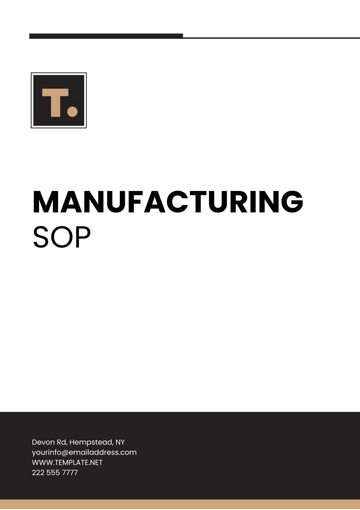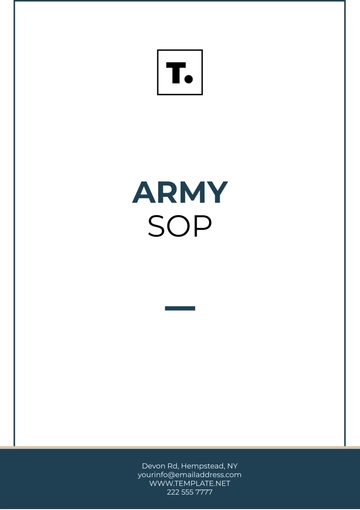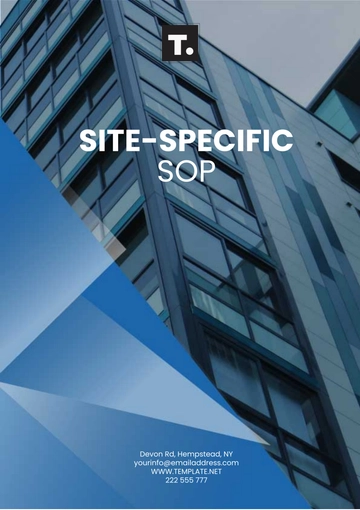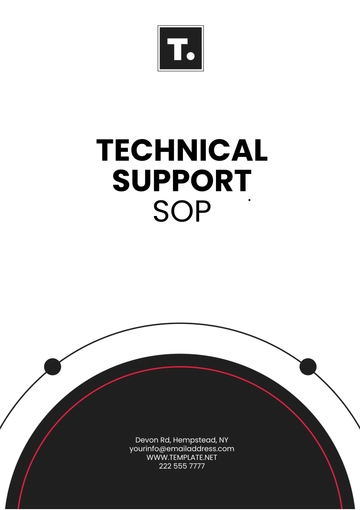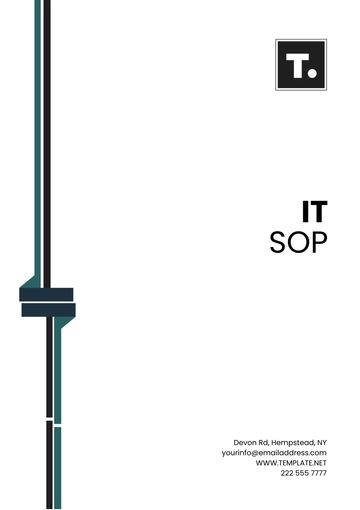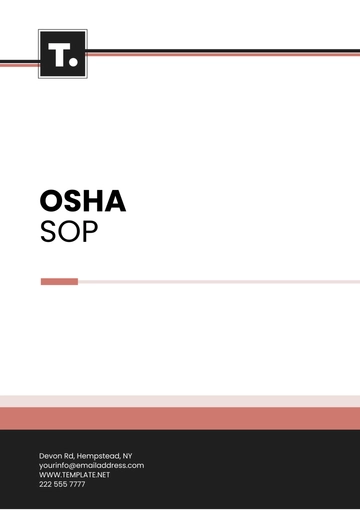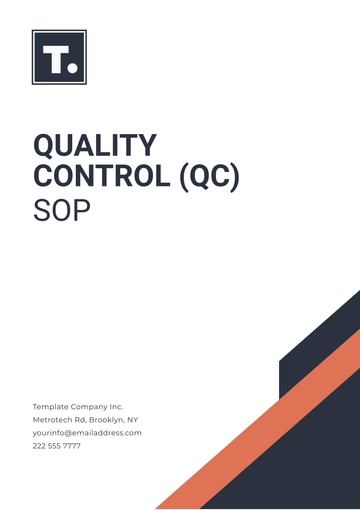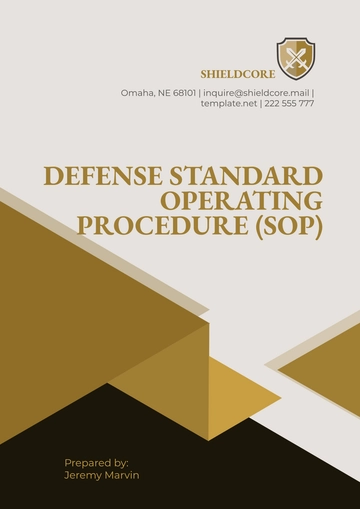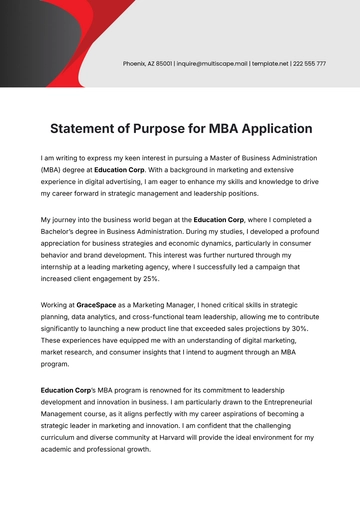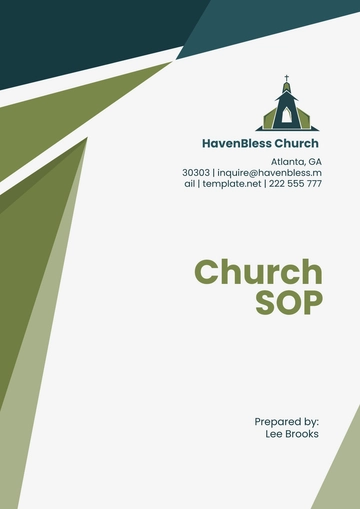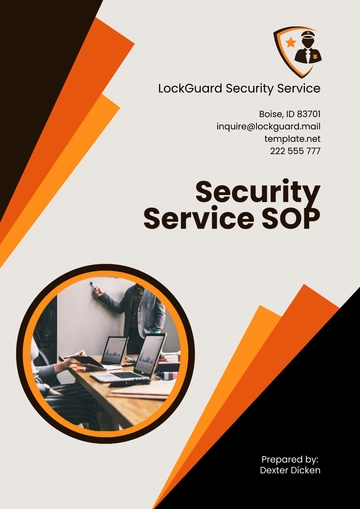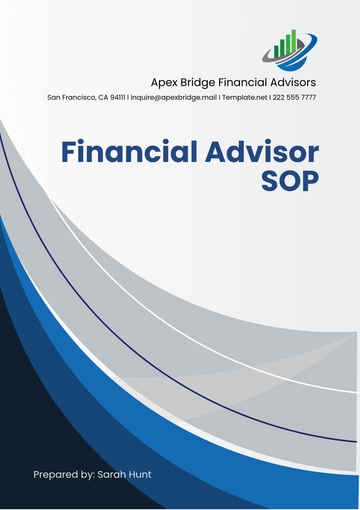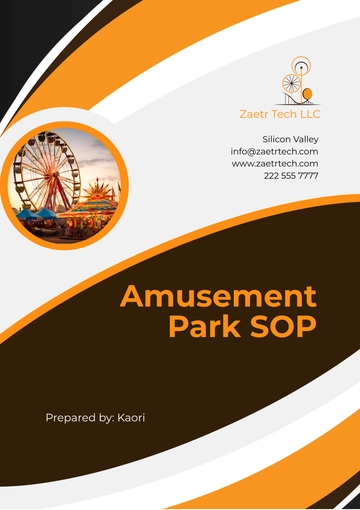Free Bakery Equipment Maintenance SOP
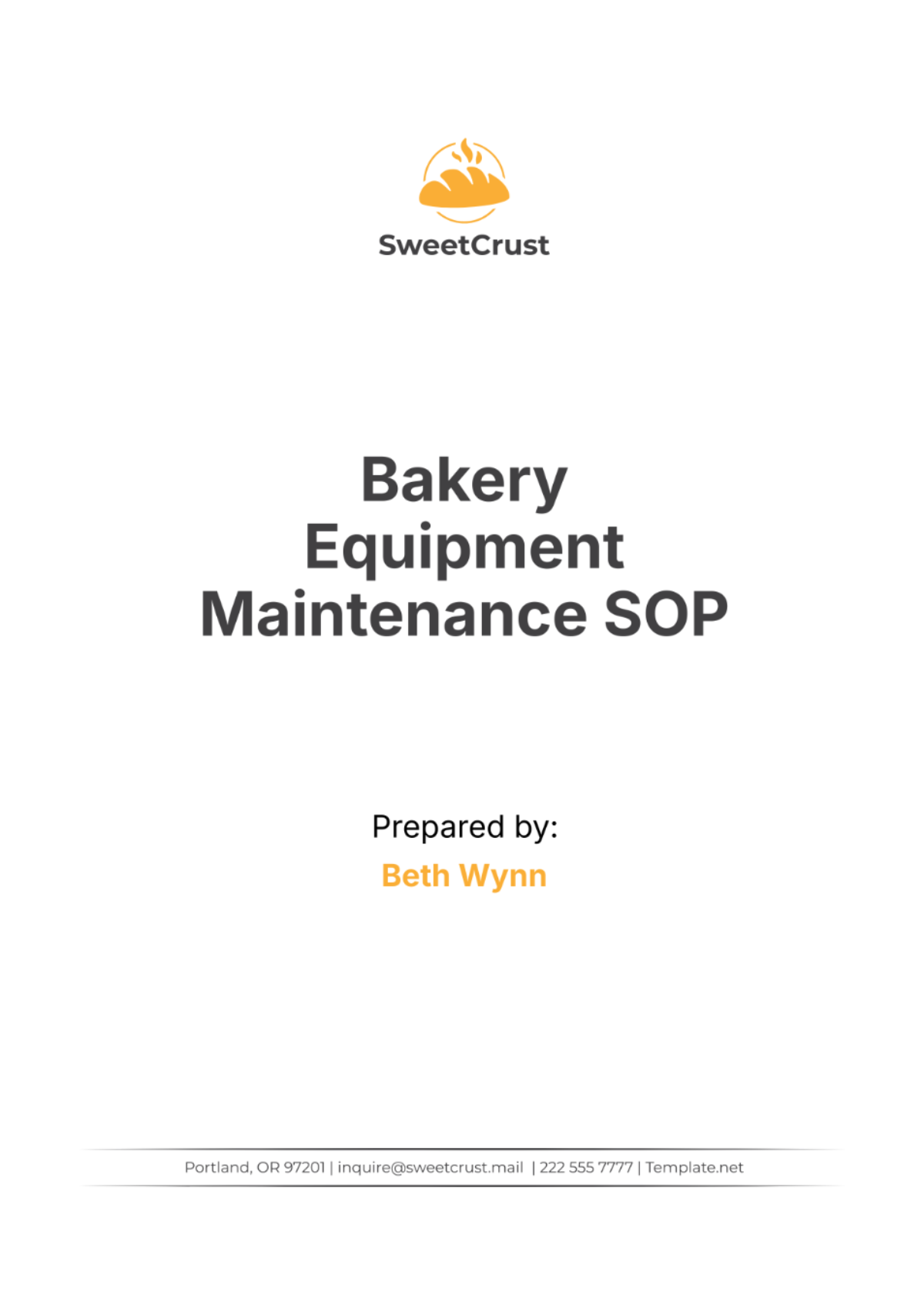
I. Introduction
A. Purpose
[Your Company Name]'s Standard Operating Procedure (SOP) comprehensively details the methodical approach we employ to maintain our bakery equipment. The intent behind this document is to ensure that each piece of machinery functions at its highest level of efficiency. By adhering to the outlined procedures, our goal is to minimize instances of downtime and protract the operational lifespan of our equipment. Additionally, the practice of regular maintenance plays a crucial role in averting unforeseen breakdowns, which have the potential to disrupt our production processes.
B. Scope
[Your Company Name]'s Standard Operating Procedure (SOP) is designed to govern the use and maintenance of all equipment utilized within the bakery, which encompasses ovens, mixers, refrigeration units, and any other types of machinery employed during the production process. The scope of this SOP includes guidelines for both routine maintenance tasks and the execution of emergency repairs. Furthermore, it mandates that all employees who are involved in the handling, operation, and maintenance of this equipment must strictly follow the outlined procedures and guidelines.
C. Responsibilities
The Bakery Manager holds the responsibility for ensuring that the implementation and adherence to this Standard Operating Procedure (SOP) is thoroughly overseen. Additionally, Maintenance Technicians are tasked with executing routine maintenance and carrying out necessary repairs as per the procedures detailed in the SOP. Furthermore, it is required that all bakery staff members undergo training to perform basic maintenance tasks, and they must report any equipment issues to the appropriate personnel without delay.
II. Equipment Overview
A. List of Equipment
Convection Ovens | Essential for baking, these ovens use a fan to circulate hot air, ensuring even cooking. |
Stand Mixers | Used for mixing doughs and batters; includes various attachments for different mixing needs. |
Refrigeration Units | Keeps ingredients and finished products at safe temperatures to prevent spoilage. |
Dough Sheeters | Rolls dough to a consistent thickness for various baked goods. |
Packaging Machines | Automates the packaging of finished products, improving efficiency and consistency. |
B. Description of Each Equipment
Convection Ovens
Designed to handle large volumes of baked goods, these ovens feature adjustable racks and temperature controls. Regular maintenance ensures even heat distribution and accurate temperature settings.
Stand Mixers
These mixers come with different bowl sizes and mixing speeds to accommodate various recipes. Proper maintenance includes checking for mixer attachment wear and ensuring all moving parts are lubricated.
Refrigeration Units
Includes walk-in coolers and reach-in refrigerators that maintain optimal temperatures for ingredient preservation. Maintenance involves monitoring temperature settings and ensuring proper airflow.
Dough Sheeters
Used to create uniform dough sheets for pastries and bread, these machines require regular cleaning and inspection of rollers and belts.
Packaging Machines
Ensures that products are sealed and labeled correctly, which helps maintain product quality and extends shelf life. Regular maintenance includes checking sealing mechanisms and calibration.
C. Manufacturer’s Maintenance Recommendations
For detailed maintenance instructions, it is essential to consult the manual provided by the manufacturer for each piece of equipment. These manuals contain specific guidelines and schedules for servicing and part replacements that have been recommended by the manufacturer. It is crucial to adhere strictly to these recommended schedules and procedures to ensure that all maintenance activities are performed correctly. By doing so, you not only maintain the efficiency and functionality of the equipment but also ensure compliance with the manufacturer's guidelines, thereby avoiding any risk of voiding the associated warranties.
III. Routine Maintenance
A. Daily Maintenance Tasks
Cleaning Procedures
Remove any food residues and wipe down surfaces with appropriate sanitizers to prevent contamination. Check for any visible issues like leaks or unusual noises and address them promptly.
Basic Inspections
Verify that all equipment operates correctly, including checking for proper temperature settings and operational sounds. Ensure that all safety features are functioning as intended.
B. Weekly Maintenance Tasks
Detailed Inspections
Examine all equipment components for signs of wear, such as loose belts or frayed wires, and replace parts as needed. Inspect the equipment for any performance issues or unusual vibrations.
Lubrication
Apply lubrication to moving parts such as gears and bearings to prevent friction and wear. Refer to the manufacturer’s recommendations for the appropriate types and amounts of lubricant.
C. Monthly Maintenance Tasks
Deep Cleaning
Conduct a thorough cleaning of all equipment, including disassembling parts if necessary to remove built-up grime and residue. Use non-abrasive cleaning agents to avoid damaging surfaces.
Calibration Checks
Verify and adjust the calibration of equipment such as ovens and mixers to ensure they operate within specified tolerances. Record all calibration settings for future reference.
IV. Inspection Procedures
A. Visual Inspections
Identifying Wear and Tear
Regularly check for physical damage such as cracks, rust, or worn belts that may affect equipment performance. Pay special attention to high-wear areas and replace any damaged components promptly.
Checking for Leaks and Cracks
Inspect refrigeration units and other equipment for signs of leaks, which could indicate issues with seals or hoses. Address any cracks or leaks immediately to prevent equipment failure and safety hazards.
B. Functional Testing
Operating Tests
Run each piece of equipment through its full operating cycle to ensure it functions as expected. Listen for abnormal noises and observe the equipment’s performance for any irregularities.
Performance Benchmarks
Measure the performance of equipment against manufacturer specifications to ensure it meets required standards. Document any deviations and take corrective actions as necessary.
V. Cleaning Protocols
A. Cleaning Agents and Tools
When cleaning equipment, it is vital to select cleaning agents that are both safe for use with food and capable of effectively removing contaminants without causing harm to the equipment surfaces. This means opting for substances that are designed to be gentle and non-damaging while still providing thorough cleaning. Additionally, it is recommended to utilize non-abrasive tools, such as soft cloths and brushes, in order to prevent any potential scratching or damage to the components of the equipment.
It is equally important to confirm that the cleaning agents chosen are appropriate and compatible with the specific type of equipment being cleaned. This careful selection and gentle handling ensure the longevity and proper functioning of the equipment while maintaining a high standard of hygiene.
B. Cleaning Frequency
To maintain hygiene standards, it is essential to undertake daily cleaning tasks, focusing specifically on the removal of any food residues. This routine helps to effectively prevent any potential contamination. Additionally, it is crucial to carry out a thorough deep cleaning of all equipment on a monthly basis, or even more frequently if the circumstances demand, such as in cases of high usage or varied product types. Adherence to these cleaning schedules must be strict and unwavering to ensure that the highest levels of cleanliness and hygiene are consistently upheld.
C. Special Cleaning Instructions
After Heavy Use
Following periods of especially heavy or rigorous use, it becomes crucial to meticulously clean the equipment. This thorough cleaning process is essential to ensure that all stubborn residues are fully eliminated, thereby preventing any potential build-up from occurring and maintaining the equipment in optimal working condition.
Before Food Preparation
Ensuring that each and every piece of equipment is meticulously cleaned and sanitized before any food preparation activities begin is of utmost importance. This practice is vital not only to prevent any instances of cross-contamination but also to maintain the highest standards of food safety. It involves taking the necessary time and care to cleanse all utensils, machines, and surfaces that will come into contact with food. Following strict cleaning protocols reduces foodborne illness risk and maintains food quality, ensuring a safe, hygienic culinary environment.
VI. Repairs and Troubleshooting
A. Common Issues and Solutions
Mechanical Failures
Common mechanical issues include broken belts, malfunctioning motors, and jammed components. Replace worn or damaged parts promptly and consult the equipment manual for detailed repair instructions.
Electrical Problems
Electrical issues such as faulty wiring, blown fuses, or malfunctioning controls can disrupt equipment operation. Inspect electrical connections and components, and ensure that the power supply is stable. For complex electrical problems, contact a qualified electrician.
B. Reporting Procedures
Documenting Issues
Make sure to document all equipment issues in the maintenance log. In your entry, be thorough and include a detailed description of the nature of the problem, any symptoms you observed, and the specific actions you took to address the issue. This comprehensive documentation is crucial because it allows us to track recurring problems and provides valuable insights that inform future maintenance decisions. By diligently recording this information, we can improve our equipment management and ensure more effective and efficient maintenance practices in the future.
Requesting Professional Repairs
If you encounter issues that extend beyond routine maintenance tasks, it is advisable to get in touch with a professional service provider. When doing so, make sure to supply them with comprehensive and specific information about the nature of the problem. Furthermore, it is essential to ensure that every repair carried out is meticulously documented. This documentation should include details such as which parts were replaced and the total cost of the service performed.
VII. Record Keeping
A. Maintenance Logs
Ensure that comprehensive and meticulously detailed logs are kept for every maintenance activity conducted, encompassing tasks performed on a daily, weekly, and monthly basis. For each maintenance activity, meticulously document the exact date on which the work was carried out, the individuals or personnel who were directly involved in the maintenance process, and any observations, issues, or anomalies that were noticed or encountered during the course of the work. Maintaining these logs with precision is of utmost importance as they are vital for monitoring and tracking the performance and condition of the equipment over time, as well as for planning and scheduling future maintenance activities to ensure continued operational efficiency and effectiveness.
B. Inspection Reports
Maintain thorough and detailed documentation for every inspection conducted. This documentation should encompass both visual examinations and functional assessments. Ensure that the reports provide comprehensive information regarding the state and condition of the equipment inspected. Additionally, record any issues or problems that were identified during the inspections, as well as the corrective actions that were taken to address these issues. It is crucial to periodically review these reports to detect and analyze any patterns or recurring problems that may emerge over time.
C. Repair Histories
Please ensure to comprehensively document every repair activity. This documentation should include detailed information about the nature of the problem encountered, the specific parts that were replaced during the repair process, and the exact date when the service was performed. Additionally, make sure to include the name and relevant credentials of the technician who carried out the repair work. If there are any follow-up actions required or any subsequent measures that need to be taken, these should also be noted meticulously in the record. Maintaining this detailed history is crucial for accurately tracking the reliability of the equipment over time. Moreover, it is essential for effectively managing and forecasting repair costs.
VIII. Safety Measures
A. Personal Protective Equipment (PPE)
It is vital to ensure that all personnel don proper personal protective equipment (PPE) when engaging in maintenance activities. This includes wearing items such as gloves, safety goggles, and aprons, to provide a comprehensive shield against various workplace hazards. The use of PPE is an essential safety measure to guard individuals from potential dangers including sharp edges, hot surfaces, and exposure to chemicals used in cleaning. To maintain a high level of safety, it is also crucial to regularly review and update the PPE requirements, taking into consideration any changes or updates in the equipment being used and the specific maintenance tasks being carried out.
B. Lockout/Tagout Procedures
Before you undertake any maintenance tasks on equipment, it is imperative to adhere to lockout/tagout procedures to ensure that the equipment is completely de-energized. This process involves systematically disconnecting or securing all power sources to prevent any unexpected energization or start-up of the machinery. You need to lock power sources to keep them off, attach tags indicating maintenance, and ensure all personnel are trained in these lockout/tagout procedures to prevent accidental equipment reactivation and ensure safety.
C. Emergency Procedures
Develop and communicate a clear plan for responding to emergencies, including equipment malfunctions and accidents. Ensure that all staff are familiar with emergency procedures, including shutting down equipment, reporting incidents, and accessing first aid. Regularly conduct drills to practice and review emergency response protocols.
IX. Review and Revision
A. SOP Review Schedule
Review this SOP annually or whenever significant changes occur in equipment or procedures. Update the SOP as needed to reflect new best practices, regulatory requirements, or changes in equipment. Ensure that all revisions are documented and communicated to relevant personnel.
B. Revision History
Maintain a record of all SOP revisions, including the date of each change and a brief description of the updates. This history helps track the evolution of the SOP and ensures that all changes are properly implemented and approved.
C. Approval Process
Obtain approval for all SOP revisions from the Bakery Manager and other relevant stakeholders. Ensure that revisions are reviewed for accuracy and completeness before final approval. Distribute updated SOPs to all relevant staff and provide training on any new procedures.
- 100% Customizable, free editor
- Access 1 Million+ Templates, photo’s & graphics
- Download or share as a template
- Click and replace photos, graphics, text, backgrounds
- Resize, crop, AI write & more
- Access advanced editor
Utilize the Bakery Equipment Maintenance SOP Template from Template.net to streamline your maintenance processes. Fully editable and customizable, this template ensures your equipment remains in top condition with ease. Leverage our AI Editor Tool to tailor the SOP to your specific needs, enhancing efficiency and prolonging equipment lifespan. Ideal for maintaining operational excellence.




